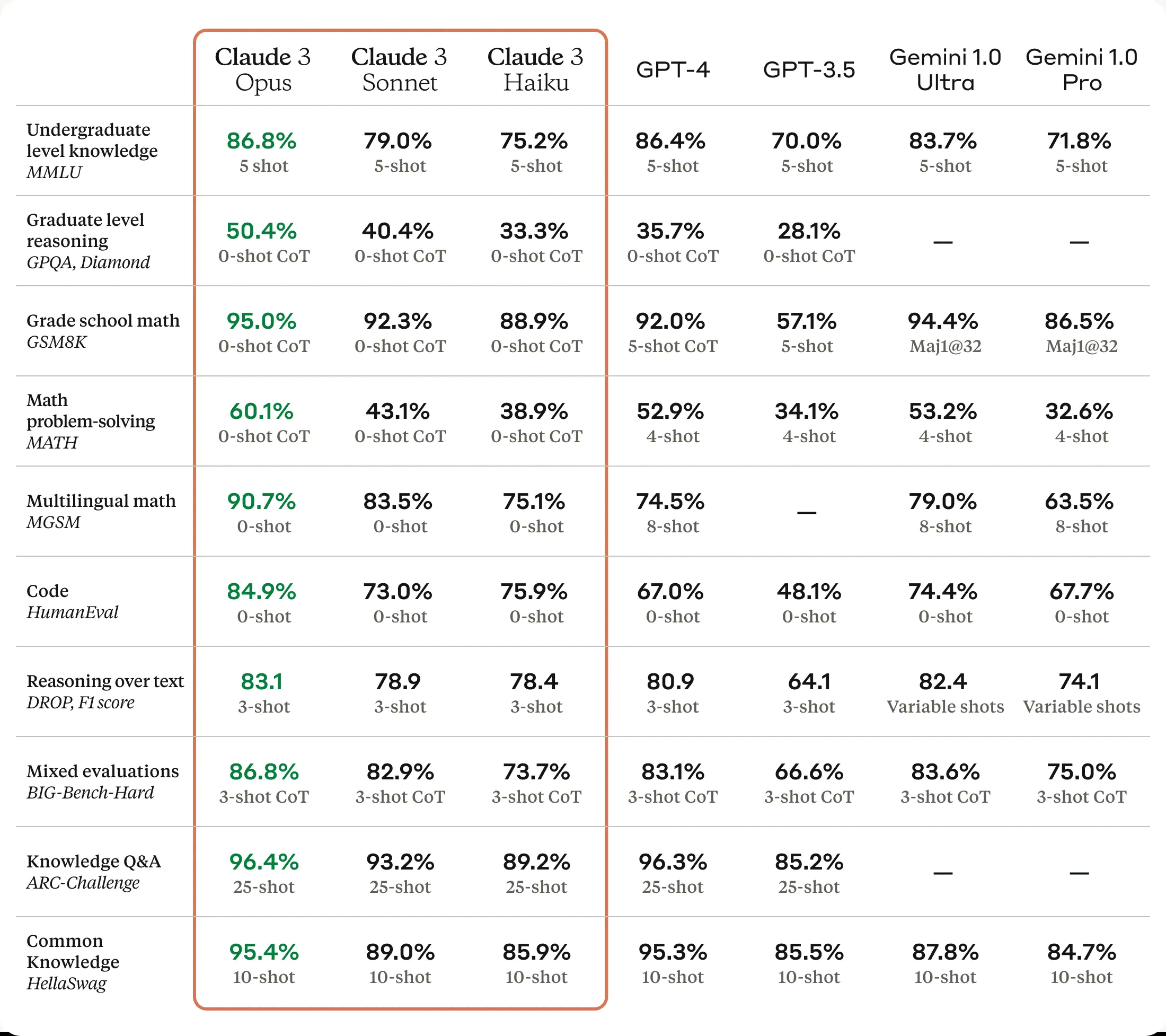The battle between better generative models for artificial intelligence applications it is increasingly coming to the fore. Anthropic announced the model family today Claude 3thanks to which it aims to establish new reference standards for the most complex and complex “cognitive tasks”.
Anthropic is the Europen-American startup that welcomes under its wing several figures who left OpenAI. Founded in 2020 by Dario Amodei, former vice president of research at OpenAI, together with his sister Daniela Amodei, the company stood out with the launch of Claude, a model designed to compete with blue-chip competitors. The company’s business has attracted interest from prominent investors such as Google and Amazon, with funding rounds reaching $450 million.
I Claude models of Anthropic are not yet usable from Europe but it is possible to try them (as we explain later), using NordVPN.
The differences between the new Claude 3 Haiku, Sonnet and Opus models
On March 4, 2024, Anthropic announced the availability of three versions of Claude 3: Haiku, Sonnet e Opus. They are indicated in order of increasing performanceThis means that each model is capable of better performance, allowing users to select the optimal balance of AI prowess, speed and cost for their specific application.
Opus, he smarter model of its family, according to Anthropic it outperforms its competitors in many of the common benchmarks. These include graduate-level expert knowledge (MMLU), graduate-level reasoning development (GPQA), basic mathematics (GSM8K), and more. Opus shows levels of understanding and fluency close to human ones on complex tasks, paving the way for applications capable of providing results increasingly closer to those expected.
Almost instant results with Claude 3 models
The Claude 3 models can be used to handle a wide spectrum of application fields. Chatbots can obviously be set up to communicate with customers, tools capable of automatically completing requests, setting up the extraction of useful information from large amounts of data, receiving immediate responses and in real time.
Haiku is presented as the fastest model and convenient on the market: just think that he can read a research article published on arXiv, dense with information and data (~10,000 tokens), with graphs and tables in less than three seconds. Anthropic notes that there is still room to improve performance.
For most workloads, Sonnet – the “intermediate” model – is 2 times faster than Claude 2 and Claude 2.1, offering significantly better results. Excels at demanding tasks quick responses.
Multi-channel processing opens up to artificial intelligence
The Claude 3 models have vision ability sophisticated: they can process a wide range of visual formats, including photos, graphs, tables and technical diagrams. This new mode of operation is particularly attractive to enterprise customers, some of whom have up to 50% of their data stored away formats come PDF, presentations and structured documents with complex layouts.
Anthropic developers also tend to point out that, compared to previous generations, the Claude 3 models reduce the number of occasions where they refuse to answer user questions. This behavior is usually a symptom of one lack of contextual understanding.
Huge contextual window
Speaking of generative models, the contextual windowo context window, refers to the amount of information provided to the model to generate each response. This is the information that the model examines to understand the context of the question or input.
A larger contextual window allows the model to consider more amount of words o token in the input sequence. This is very useful when dealing with complex conversations or questions that require an in-depth understanding of the context.
In the case of Anthropic’s new Claude 3 models, the initial contextual window has dimensions pari a me 200.000 token. This means that the model considers the last 200,000 tokens of the input to generate the response. Furthermore, the models are capable of handling inputs greater than 1 million tokens for those select users who require even heavier and more complex processing.
Responsible design
According to Anthropic, the design and grounding of models like Claude 3 has engaged and continues to involve several technical teams responsible for monitoring and mitigating a wide range of risks. The goal is to put AI models in the hands of companies, professionals and end users that minimize potential risks while improving aspects such as transparency and security.
How to try Claude 3
Anthropic offers the possibility, starting today, to start using the new Claude 3 models: just visit the home page of the site, click on Try Claude then log in via an email account (after registration) or a Google account using OAuth authentication. Obviously, they are also available API (Application Programming Interface), useful for integrating Claude 3 models with your own projects.
Unfortunately Claude is not yet directly usable byEurope but it is possible to subscribe to a VPN plan to access from another country and thus be among the first to use the new models.


